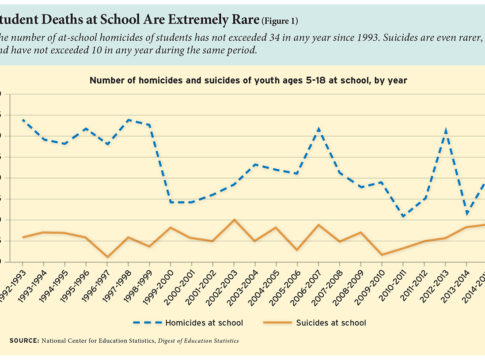The debate over how to keep students safe at school, and in particular, how to prevent school shootings, has been front and center this week.
Two new studies suggest that hiring more police officers can have negative effects on student academic performance.
In one study, test scores went down for black boys in high-crime neighborhoods where an influx of police officers were sent to make arrests for low-level offenses. In the other study, students were less likely to graduate or to enroll in college if they attended schools in Texas where police officers were hired to work after the districts received a special federal grant.
In a new EdNext article on keeping students safe at school, Bryan R. Warnick and Ryan Kapa consider whether increased school security measures do more harm than good.
They make the case for “taking rational and effective actions to prevent school shootings while also being cautious not to sacrifice educational goals or the school climate for the sake of exaggerated safety concerns.” They continue, “One approach that risks sacrificing these values is an overemphasis on ‘target hardening,’ which focuses primarily on safety and security technologies.”
They conclude:
We do not mean to imply that target hardening is never the appropriate response to school shootings. In some situations, such practices may indeed be necessary. What is crucial is that schools remain aware of the potential negative impact of such practices and weigh them closely against the educational mission. At the same time, educators should embrace the idea that school safety is first and foremost a matter of school community: an issue of the trust and communication that exists, and of the sense of belonging that schools can foster to counteract the status tournament of adolescence. The practices that work in one school may not work in another. School and community leaders should take a careful look at their own school environment and decide on methods that could create not only a secure setting, but also a caring one. Instead of simply hardening schools against attack, educators should focus on building school environments characterized by mutual trust, active listening, respect for student voices and expression, cooperativeness, and caring relationships with and among students. These measures not only make schools safer, they also make schools better.
Please read “Protecting Students from Gun Violence” from the upcoming Spring 2019 issue of Education Next.
— Education Next





